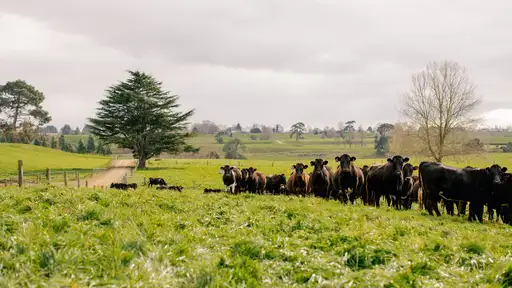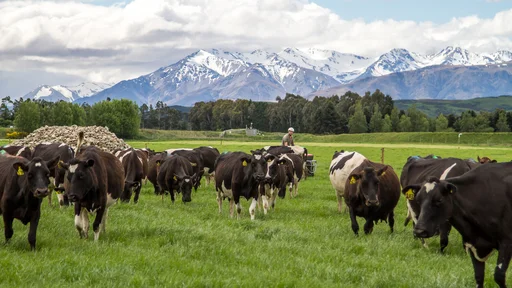Average Pasture Cover (APC) and growth rates are falling. Typically, we get a 6-week “dry” period most years. 6 weeks is okay, 12 weeks isn’t. In the following, I will cover off some fundamentals you should be thinking about and adapting to your own farms’ needs.
Supply vs Demand
Pasture growth rates of 15 kgs DM/ha per day means you can afford to have 1 cow per ha without any supplements. So the other 2 cows you have on your farm are being supported by all supplements. The margin on feeding empty cows is not great at 35-40 cents per kg of DM fed. Best to drop the empties now. Then start working down through the in-calf culls you have identified.
Feed budget
Know what supplements you need to get through winter safely. Ring-fence this feed and don’t be tempted to feed it now. Do a feed budget to work out what supplements can be fed this autumn. Remember that pasture will dissolve away once we do get the big rain event, potentially leading to under-fed cows and pastures over-grazed. Plan for this happening.
Protect the future - BCS
We now have an eye on next season. A key part to this is hitting body condition score (BCS) targets at calving.
To try and bridge as many cows through this dry period, milking one herd or all cows on OAD can be an effective way to keep more cows milking for longer, on the hope it rains in March and you get the rewards in April and May.
If we do not manage this well, then the herd average BCS may not be bad, but the range of cows can be 3.0 to 6.0 by late autumn. BCS targets are 5.0 for mixed age (MA) cows and 5.5 BCS for first and second calvers to maximise production and reproduction.
The best way to manage your herd through March to May is to start with body condition scoring your herd. This will help you get a realistic understanding of condition as opposed to just thinking they are okay ‘apart from the odd light one’.
First and second calvers still need extra feed to grow out their frame. If these cows are dried off with the older mixed age animals, the older cows will gain weight a lot faster than the younger animals as they compete better for any supplements fed, and the younger animals are usually starting from a lower BCS.
Dairy NZ’s booklet ‘Body Condition Scoring Made Easy’ will help to guide you in condition scoring.
Once you have worked out what percentage of your herd are in the 4.0 BCS or lower category, then you can decide what management changes you can make to achieve days in milk and hit BCS targets by June.
The table below outlines that number of days a cow requires to be dried off prior to calving to have any chance in gaining the level of BCS needed to meet the 5.0 and 5.5 BCS targets at calving.
If the start of calving is 20 July, then the dry-off dates are as follows:
Mixed age cows - body condition score
|
BCS |
Increase of BCS required |
Number of days required |
Dry-off date |
|---|---|---|---|
|
BCS 3.0 |
Increase of BCS required 2.0 |
Number of days required 120 |
Dry-off date 20 March |
|
BCS 3.5 |
Increase of BCS required 1.5 |
Number of days required 100 |
Dry-off date 10 April |
|
BCS 4.0 |
Increase of BCS required 1.0 |
Number of days required 80 |
Dry-off date 1 May |
|
BCS 4.5 |
Increase of BCS required 0.5 |
Number of days required 60 |
Dry-off date 20 May |
R3 year cows - body condition score
|
BCS |
Increase of BCS required |
Number of days required |
Dry-off date |
|---|---|---|---|
|
BCS 3.0 |
Increase of BCS required 2.5 |
Number of days required 140 |
Dry-off date 1 March |
|
BCS 3.5 |
Increase of BCS required 2.0 |
Number of days required 120 |
Dry-off date 20 March |
|
BCS 4.0 |
Increase of BCS required 1.5 |
Number of days required 100 |
Dry-off date 10 April |
|
BCS 4.5 |
Increase of BCS required 1.0 |
Number of days required 80 |
Dry-off date 1 May |
|
BCS 5.0 |
Increase of BCS required 0.5 |
Number of days required 60 |
Dry-off date 20 May |
To gain one BCS above maintenance requirements a Friesian cow will need to eat 160 kgs DM grass silage, or 160 kgs DM maize silage or 125 kgs DM of PKE.
A cow dried off on 1 May, at 4.0 BCS and due to calve on 20 July can only put on weight effectively up to one month before calving. So, she has 50 days to gain 1 BCS. Maintenance for her through May and June will be about 8 kgs DM per day.
To put on 1 BCS with maize she will need about 160 kgs DM, so allow for wastage. The total intake needed calculates to 11.2kgs DM per cow per day before wastage. When allowing for wastage, this figure is closer to 13-14 kgs DM per day.
Don’t ignore the changes happening on your farm in these dry conditions. Get a good gauge on your herds BCS now and start making plans to minimise any damage to next season and capture what you can profitably this season.
Darren Sutton
FarmWise consultant




